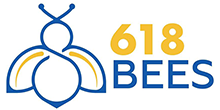How technology can help fight COVID-19
Large-scale collection of data can be of great help in curbing the COVID-19 pandemic, by creating insight into the spread that can enable leaders respond effectively to the pandemic and create new technologies that can aid the fight against the disease. In all of this, privacy and public trust must not be neglected and best practices should be identified to maintain responsible data-collection and data-processing standards at a global scale.
Data can also help the authorities identify the most vulnerable communities because as we face a global crisis, the decisions of our leaders will over the coming weeks shape the world for years to come. From a public health perspective, to combat an epidemic, officials must take a number of actions, such as: build awareness, set guidelines for health professionals, target infection clusters, limit population movements, and allocate scarce resources. These decisions will influence how many people will survive and how many will die over the coming days, weeks and months. Leaders must act quickly and decisively in order to save lives.
Use of data from Mobile Phones and other Digital sources
Relying on digital data sources, such as data from mobile phones and other digital devices, is of particular value in outbreaks caused by newly discovered pathogens, for which official data and reliable forecasts are still scarce. A recent study has shown the possibility of forecasting the spread of the COVID-19 outbreak by combining data from the Official Aviation Guide with data on human mobility from the WeChat app and other digital services owned by Chinese tech giant Tencent. Mobile-phone data already showed potential in predicting the spatial spread of cholera during the 2010 Haiti cholera epidemic, while leveraging big-data analytics showed effectiveness during the 2014–2016 Western African Ebola crisis. Thespread COVID-19, and the resilience of people and systems to cope with the virus, can help public health and humanitarian leaders respond more effectively to the pandemic.
“Another example of effective use of data comes from South Korea. The country is watching quarantined citizens with a mobile app, developed by the Ministry of the Interior and Safety, as reported by the MIT Technology review. The country’s sense of urgency escalated after “Patient 31” became a “superspreader” and is thought to have caused the rapid rise in cases. People who are quarantined can use the app to communicate with the local government case officers and report their symptoms. Both the person, and the government case officer are notified if the person leaves the designated quarantine zone. The app is not mandatory, and people can opt out. Such measures, together with the South Korea mass coronavirus testing, has contributed to “flattening the curve” in the country. The number of daily confirmed cases peaked on February 29 and has decreased ever since.”
Use of data in Identifying communities at risk
Data can be used in Identifying the most vulnerable communities and this in turn can be important in guiding the response efforts of health infrastructure improvements, emergency funding measures and preventive measures. “This is especially relevant in the emerging countries where living conditions can compromise one’s ability to follow advice on how to behave. Washing your hands for 20 seconds or more with clean soap is hard to do when your main source of water is a polluted river. Self-quarantine and self-isolation is unrealistic when you share a single room with other family members. And staying at home is impossible if you live hand to mouth and have to go out twice a day to work and then stock up for the next meal.”
With a high level of detail, authorities can map areas where the ability to respond appropriately is compromised. This can be done using a combination of available primary data collection, data from national bureaus of statistics and satellite images. “The Location Analytics (LOCAN) team at Dalberg research based in Kenya is analyzing risk profiles in multiple African countries. The results are then fed back into epidemiological models as input for informed decision making on the crisis response. A similar risk model, which drew on three key risk variables – people aged over 60, regular smokers, and those who use dirty cooking fuel in their houses, was developed and applied to Nigeria where health officials continue to announce new cases despite a strong early federal response.”
‘World scientists on COVID-19 met at the World Health Organization’s Geneva headquarters from 11 to 12 February 2020 to assess the current level of knowledge about the new virus, agree on critical research questions that need to be answered urgently, and ways to work together to accelerate and fund priority research that can contribute to curtail this outbreak and prepare for future outbreaks.” We are hopeful that just like other outbreaks have been helped by technology in the past, COVID-19 will also be effectively defeated with the help of technology.
Team 618 Bees
Source: www.weforum.org, www.nature.com, https://www.who.int/blueprint/priority-diseases/key-action/novel-coronavirus/en/
The information in this blog post (“post”) is provided for general informational purposes only, no information contained in this post should be construed as legal advice, nor is it intended to be a substitute for legal counsel on any subject matter. No reader of this post should act or refrain from acting on the basis of any information included in, or accessible through this post without seeking the appropriate legal or professional advice from the particular facts and circumstances at issue from a lawyer. This post is protected by intellectual property law and regulations. It may however be shared using appropriate sharing tools provided that our authorship is always acknowledged and this Disclaimer Notice attached
